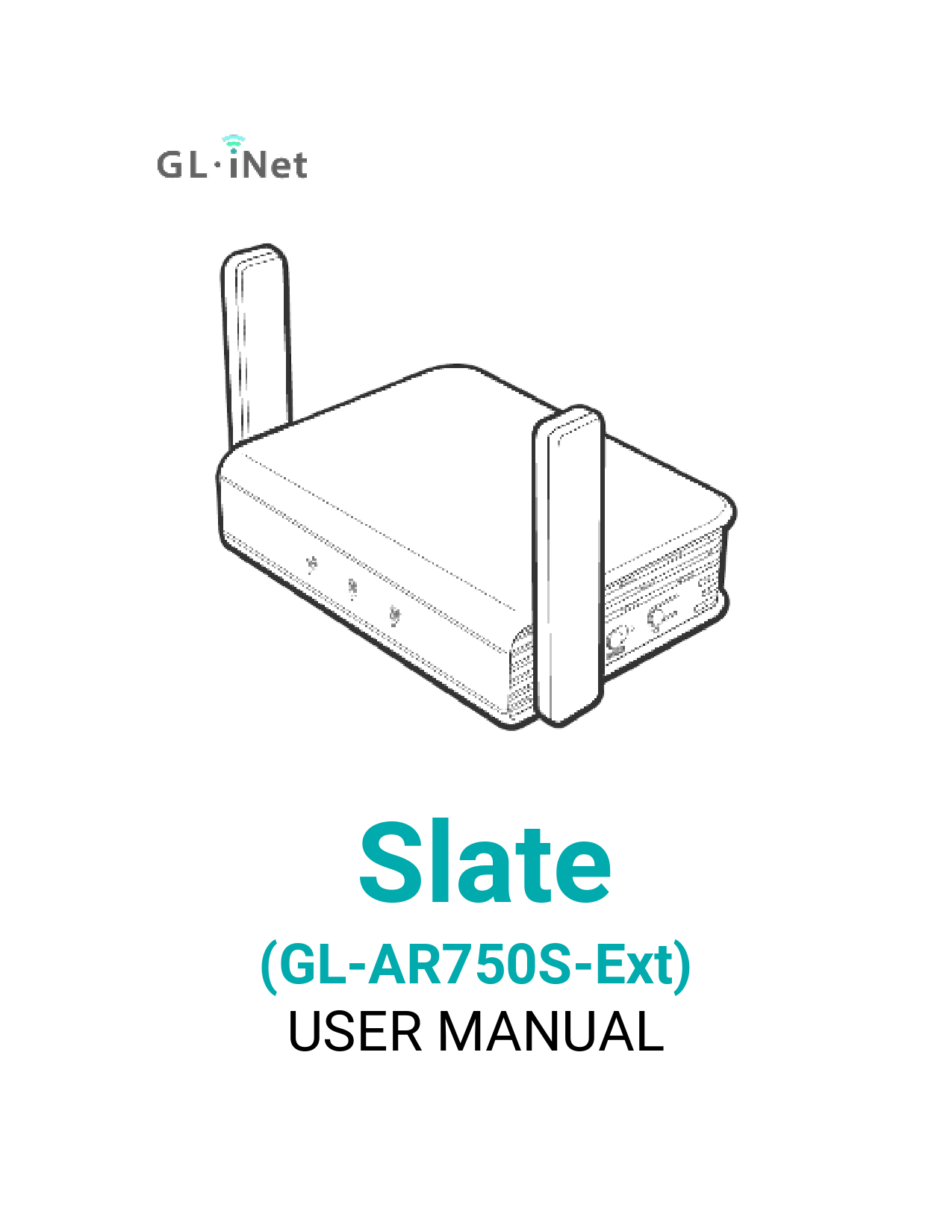Introduction to the GL.iNet Slate
This document serves as a comprehensive user manual for the GL.iNet Slate (Model: GL-AR750S-Ext). It provides detailed instructions and guidance for setting up and utilizing the features of this versatile travel router.
The GL.iNet Slate is designed for users on the go, offering robust connectivity options, including Wi-Fi, Ethernet, and USB 3G/4G modem support. It also features advanced capabilities such as VPN integration, repeater functionality, and file sharing.
Explore the various sections of this manual to learn how to connect to the internet, configure wireless settings, enhance your security with VPNs, and manage applications for an optimized networking experience.
For more information about GL.iNet products, please visit the official GL.iNet website.
